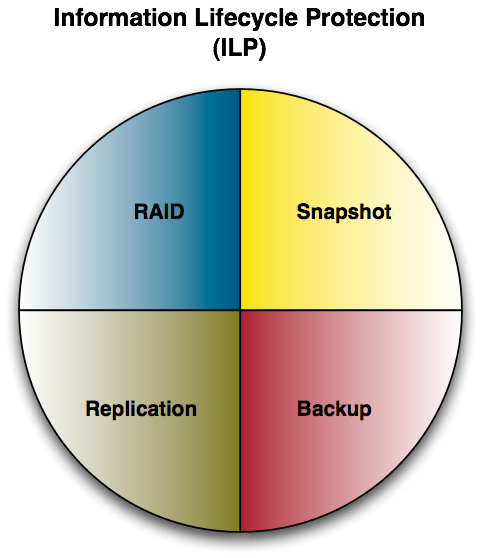It’s fair to say I’m a big fan of backup and recovery. So much so that a substantial part of the last 19 years of my career have been devoted to it in some form or another.
Yet here’s the rub: World backup day (March 31) is full of good intentions but has entirely the wrong focus. By that I don’t just mean it should be World Recovery Day (although that would be a nice change); instead, it places emphasis on just one aspect of data protection, and these days there’s no such thing as a data protection strategy that only leverages a single aspect.
Data protection – Information Lifecycle Protection (ILP), as I like to think of it starts well before the first backup is taken, and extends into a variety of fields: storage, operating systems and virtualisation. You might say at bare minimum, ILP is comprised of the following:

(It’s also impossible to have a truly effective Information Lifecycle Protection strategy without also having a data lifecycle management strategy – i.e., be comfortable with archival and pruning of data.)
It would be easy to look at the above diagram and assume it’s all about storage, but there’s more to it than that. Smart companies are starting to focus on their data protection in an application-centric approach. That’s not to suggest decentralisation of data protection, but more decentralised integration with intelligent centralised reporting, capacity management and policy management. For sure, storage is one aspect of what we need to protect, but if you look at an average enterprise now there are whole realms of data protection functions that have made their way up into higher layers – VMware’s SRM, vMotion, etc., are perfect examples of data-protection concepts applied at a higher level to provide more functional protection.
By application-centric approach, I’m not talking about “MSSQL Initiated” or “Oracle Initiated” (though I’ll admit that plays a part in a centralised policy/decentralised integration approach), but more a consideration of how enterprise IT needs to work in an evolving – indeed, evolved – landscape. It’s time in IT we stop thinking about backup and recovery or data protection being about a list of hosts and databases that need protection, and instead think about data protection in terms of business functions, business applications that need to be protected. From the business perspective the hosts cyclops, medusa and cerberus running the database fipr00 is meaningless – the business wants to know that the financial planning system is being protected. As cloud based approaches to IT take hold and introduce a consumer-based, service-centric view of IT, IT must adjust to think of data protection from a service, application or business function perspective.
Celebrate world backup day by all means, but let’s keep in mind it’s at just one quadrant in the information lifecycle protection approach.
